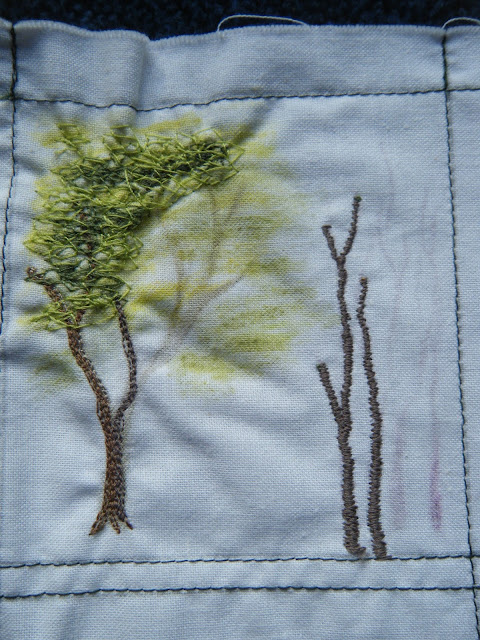Regional Day comes but once a year.... and we are set a 'challenge' by our Regional Chairman. For 2016 a page for The North West Regional Travelling Book was required featuring Stitched Postcards picturing scenes or landmarks of our area.
Here is a map showing our location on the 'edge' of the Ribble Estuary.
Here is our Postcard Page, below.
First Postcard, top left corner, is the famous Windmill on Lytham Green with the old Life Boat House in front of it.
If you come to visit you can see the wooden life boat that men used to row out to sea in to rescue poor unfortunate crew members. It looks very large in the boat house but out on sea...thank goodness for engine powered boats, and of course, the brave men/women who volunteer their time to man them.
Our windmill is also open in the summer on select Thursdays and Saturdays (see the Heritage Centre on Henry Street in Lytham for details of open hours).
Come and climb up to the very top!
Detail of Life Boat House and Windmill Postcard
The White Church, Fairhaven. This featured in an episode of Coronation Street some years back (the one where Bet Lynch decided not to get married to Alec Gilroy. I think they did in the end though but not at the White Church ).
The model Spitfire by Fairhaven Lake. I have been told that it is to scale! but it seems so tiny... oh the bravey of those who flew them.
 One of the Pagodas on the Square in St Annes.
One of the Pagodas on the Square in St Annes.
A Sandhill at St Annes. It really does look like sand and I love the texture of the grasses.
The 'real' sandhills run from Fairhaven Lake to the Beach Cafe just before the Ornamental Gardens and then again after the Pier. You can easily get sunburnt on a sunny day so take some sunblock.
The Pier at St Annes.
Lythams very own golf course. Again another lovely textured piece.
Above is a detail from the structure around the gate at the newest park in Lytham; Park4View on Station Road.
Whilst Lowther Park was laid out in Victorian times and is a traditional; Park4View started with an idea of a local mum who got together with some friends, raised funds to build the modern park, a Cafe with a Herb Garden, Nature Trail, Seaside Themed Playground, a good Adventure Playground, Skate Park and a BMX Track.
Plenty to amuse children and teenagers and a place to grab a coffee and a bite to eat.
A lovely Beach Hut. The stitching seems to depict a lovely fine day but a little windy too. Just like our weather here.
Well, that is all the 9 postcards from us here at the edge of the River Ribble by the Sea. I think that you will agree that the ladies who stitched them did a sterling job and they really do make you want to come and see the sights for yourself.
If you do, and it happens to be the 3rd Wednesday of the month, please drop in at our meeting and say "Hi". You will be warmly welcome. See address on sidebar.























































